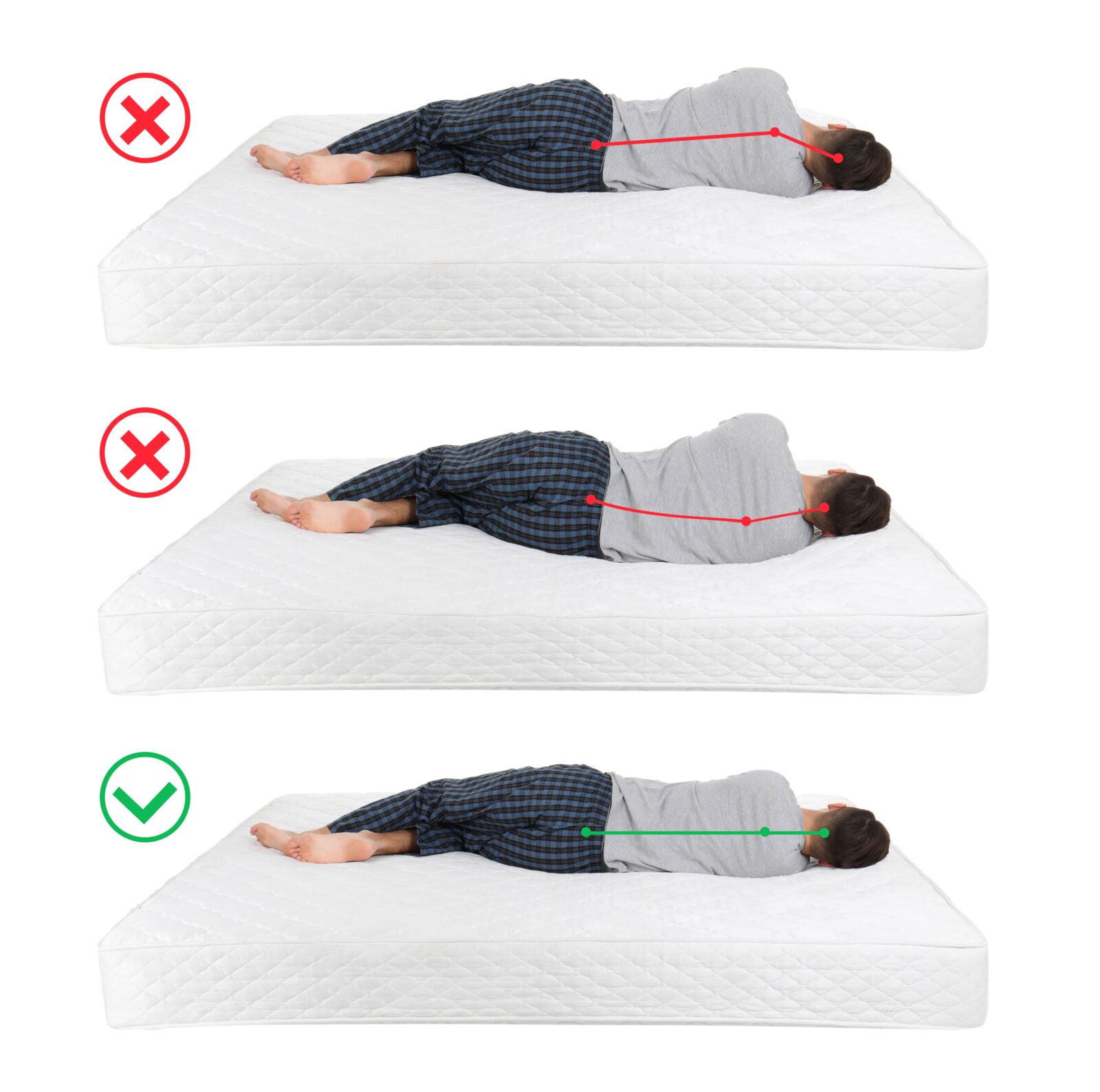Spinal health is a cornerstone of our overall well-being, influencing everything from how we move to how we feel on a daily basis. However, one critical aspect that often goes overlooked is the significant role that posture plays in maintaining the health and integrity of our spine. Poor posture can lead to a host of spinal problems, including chronic pain, reduced mobility, and even long-term degenerative conditions. Yet, with the hustle and bustle of modern life, maintaining proper posture can easily fall by the wayside. This blog post aims to shed light on the importance of good posture in spinal health, exploring how our daily habits influence our spinal wellbeing, the benefits of maintaining a proper posture, and practical tips for incorporating good posture into our lives. By understanding and addressing the nuances of spinal health and posture, we can take proactive steps towards a healthier, more comfortable life.
In This Blog:
- Understanding Spinal Health
- The Impact of Posture on Spinal Health
- The Benefits of Good Posture
- Practical Tips for Improving Posture
Understanding Spinal Health
The spine is a marvel of engineering and design, consisting of a complex structure of bones, discs, nerves, and supporting tissues. It performs several crucial functions: it supports the body, enables flexible movement, and protects the spinal cord—a key part of the central nervous system that communicates between the brain and the body. Given its critical roles, maintaining spinal health is essential for overall well-being.
The health of the spine influences far more than just our ability to move without pain. It affects our posture, which in turn impacts breathing, circulation, and even digestion. A healthy, well-aligned spine facilitates optimal body function, whereas spinal problems can lead to disruptions in these vital processes. Moreover, chronic back pain or discomfort can affect mental health, leading to increased stress, anxiety, and in some cases, depression.
Understanding the fundamental aspects of spinal health is the first step towards recognizing the importance of good posture. By keeping the spine in mind, we can begin to see how our daily habits—how we sit, stand, move, and sleep—play a direct role in our overall health and well-being. This foundational knowledge sets the stage for exploring how posture impacts spinal health and what we can do to maintain a healthy spine throughout our lives.
The Impact of Posture on Spinal Health
Posture, the way we hold our bodies while standing, sitting, or lying down, has a profound impact on our spinal health. Good posture ensures that the spine is in a neutral, aligned position, minimizing stress on spinal structures. In contrast, poor posture can distort the spine’s natural curves, leading to increased strain and pressure on the vertebrae and discs. Understanding how posture affects the spine and the potential consequences of neglecting spinal posture is crucial for maintaining spinal health and overall well-being.
How Poor Posture Affects the Spine

Poor posture—whether it’s slouching in a chair, hunching over a phone, or carrying a heavy bag on one shoulder—can cause an imbalance in the distribution of body weight. This imbalance puts unnecessary stress on certain parts of the spine, particularly the neck and lower back. Over time, this stress can lead to changes in the spine’s anatomy, such as the weakening of muscles, compression of discs, and misalignment of vertebrae. These changes not only cause pain and discomfort but can also impair the spine’s ability to absorb shock and support the body effectively.
The Long-term Consequences of Neglecting Spinal Posture
The repercussions of poor posture extend beyond immediate discomfort. Chronic misalignment can lead to a range of spinal issues, including:
- Herniated discs, where the outer layer of a disc weakens, allowing the inner material to protrude and press on nearby nerves.
- Sciatica, characterized by pain that radiates along the sciatic nerve from the lower back down to the legs, often due to a herniated disc or bone spur.
- Chronic lower back pain, which can be a result of strained muscles and ligaments from continuous poor posture.
- Degenerative disc disease, where discs lose their cushioning ability, leading to potential bone spurs and pain.
These conditions not only diminish quality of life but can also become debilitating, affecting one’s ability to work, engage in physical activities, and even perform simple daily tasks.
Benefits of Good Posture
Good posture is not just about standing tall; it’s a vital component of spinal health with wide-ranging benefits. Proper alignment of the spine distributes body weight evenly, reducing undue stress on any one part. This harmonious balance aids in:
- Reduced Back and Neck Pain: Keeping the spine naturally aligned minimizes strain on muscles, ligaments, and bones, which can significantly decrease occurrences of chronic pain.
- Improved Musculoskeletal Function: Good posture facilitates efficient movement and reduces the risk of injury, allowing muscles to work more effectively.
- Enhanced Respiratory Health: An upright posture opens up the chest, enabling deep breathing. This increased oxygen flow can improve energy levels and cognitive function.
- Optimal Digestive Function: Maintaining an aligned posture prevents compression of abdominal organs, promoting better digestion and absorption of nutrients.
- Boost in Confidence and Mood: A straight posture not only projects confidence but has been linked to positive changes in mood and stress reduction, due to its effect on hormone levels.
Practical Tips for Improving Posture
Improving and maintaining good posture requires awareness and consistent effort. Here are some practical tips to help you along the way:

- Mindful Awareness: Regularly check in with your body throughout the day. Are your shoulders hunched? Is your back slouched? Adjusting your posture frequently can help build good habits.
- Ergonomic Workspace: Set up your working environment to support good posture. Ensure that your computer screen is at eye level, your feet can rest flat on the floor or on a footrest, and your back is supported by your chair.
- Strengthen Core Muscles: Engage in exercises that strengthen your core—the muscles around your trunk and pelvis. A strong core provides better support for your spine, making it easier to maintain good posture.
- Posture-Friendly Accessories: Consider using tools like standing desks, ergonomic chairs, or posture correctors as aids in maintaining proper spinal alignment, especially if you spend long hours sitting.
- Stretch and Move Regularly: Taking short breaks to stretch or walk around can prevent muscle stiffness and encourage better posture. Yoga and Pilates are excellent for enhancing flexibility and spinal alignment.
- Proper Footwear: Wear shoes that provide support and don’t throw your body out of alignment. Avoid high heels or shoes with poor support for prolonged periods.
- Sleeping Posture: Your sleeping position can also affect your spinal health. Try to sleep in a position that maintains the natural curve of your spine and use a pillow that supports the neck without elevating it too much.
Incorporating these practices into your daily routine can significantly impact your spinal health and overall well-being. It’s important to remember that improving posture is a gradual process that requires patience and consistency. Over time, these changes can lead to a noticeable improvement in how you feel physically and mentally, underscoring the profound benefits of good posture.
Conclusion
In conclusion, the journey towards maintaining good posture is an integral part of fostering optimal spinal health and, by extension, overall well-being. The detrimental effects of poor posture extend far beyond temporary discomfort, potentially leading to long-term spinal issues that can significantly impact one’s quality of life. Conversely, the benefits of good posture—ranging from reduced pain and enhanced bodily functions to improved mood and confidence—highlight the importance of adopting practices that support spinal alignment. By integrating mindful posture habits, ergonomic adjustments, regular physical activity, and other practical tips into our daily routines, we can protect our spinal health, improve our quality of life, and enjoy the wide-ranging benefits that come with good posture. Let this serve as a call to action to assess and improve our posture, taking proactive steps towards a healthier, more vibrant life.

